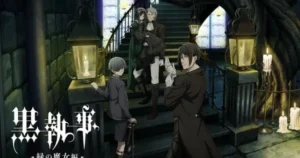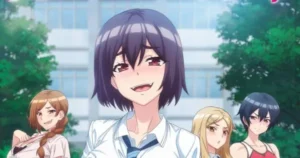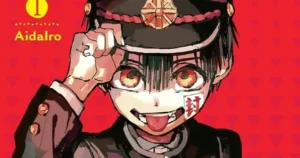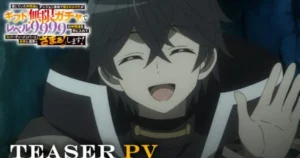Hiroyuki Etō’s Mahōjin Guru Guru 2 (Magical Circle Guru-Guru 2) manga is coming to an end with its next volume. This signals the close of another chapter in the whimsical, parody-filled adventures of Nike and Kukuri, which has captivated audiences for years.
A Beloved Series Concludes
The endnotes of the 20th volume of Mahōjin Guru Guru 2 have revealed that the subsequent volume will be the last. This announcement marks the end of the sequel series that began in 2012, continuing the story of the young hero Nike and the குருகுரு magic-wielding Kukuri.
Genesis of a Parody Manga
Hiroyuki Etō used his affection for early role-playing games to create the original gag parody manga. The adventures of Nike and Kukuri inspired a popular 1994-1995 television anime series, which in turn spawned a 1996 film and the 2000 television sequel. A third anime series adapting the manga from the first chapter aired from July 11 to December 19, 2017, consisting of 24 episodes.
A Look Back at Mahōjin Guru Guru
Mahōjin Guru Guru is a Japanese manga series written and illustrated by Hiroyuki Etō. It was serialized in Enix’s Monthly Shōnen Gangan from 1992 to 2003, spanning 16 volumes. The series is a fantasy comedy that parodies early role-playing video games (RPGs), particularly turn-based games like those in the Dragon Quest series.
Storyline
The story revolves around Nike, a young boy forced by his parents to become a hero, and Kukuri, a young girl who is the last of the Migu Migu tribe and a குருகுரு magic user. Together, they embark on a journey to defeat the demon lord Giri, who has been resurrected after 300 years. Along the way, they encounter various monsters, characters, and comical situations, often parodying common RPG tropes.
Anime Adaptations
Mahōjin Guru Guru has been adapted into several anime series:
- Mahōjin Guru Guru (1994): The first anime series, produced by Nippon Animation, aired for 45 episodes and covered the first four volumes of the manga, along with some original adventures.
- Doki Doki Legend Mahōjin Guru Guru (2000): The second anime series, also produced by Nippon Animation, aired for 38 episodes and covered volumes 5 to 11 of the manga.
- Mahōjin Guru Guru (2017): A reboot series animated by Production I.G, which aired for 24 episodes and adapted the entire manga series from the beginning.
Sequel: Mahōjin Guru Guru 2
Mahōjin Guru Guru 2 is a sequel to the original manga series. It was serialized on Gangan Online from November 2012 and follows Nike and Kukuri on a new adventure after the defeat of Giri. As of June 2024, 19 volumes have been released.
Hiroyuki Etō: The Mastermind Behind the Magic
Hiroyuki Etō is a Japanese manga artist known for his humorous and adventurous stories. Born on January 19 in Taketa, Oita Prefecture, Etō’s work is characterized by its comedic timing and parodic elements.
Early Life and Career
Etō’s interest in manga was sparked by romance manga artist Yukiko Oshima. He honed his skills at Musashino Art University, joining the Manga Research Club. In 1985, he debuted with “Watch Store Lady SEKUNDEN ZEIGER GENT TICK TICK TICK.” Before Guru Guru, he worked on game-related illustrations and articles.
Other Works
Besides Mahōjin Guru Guru and its sequel, Etō has created other manga series, including:
- Buyuuden Kita Kita
- Eisei Usagi Terebi
- Gadget
- Shuukan Watashi no Kimoi Pet
Themes and Parodies
Mahōjin Guru Guru is celebrated for its effective use of parody, humor, and adventure. The series frequently mocks RPG tropes, character archetypes, and genre conventions. For example, Nike’s reluctant hero persona and Kukuri’s unpredictable magic are constant sources of comedy.
Parody of RPG Elements
The series cleverly parodies elements common in RPGs, such as random encounters, grinding for experience points, and the often nonsensical quests given by NPCs.
Humor
The humor in Mahōjin Guru Guru is derived from the characters’ interactions, slapstick comedy, and absurd situations. The series maintains a lighthearted tone, making it accessible to a wide audience.
Adventure
Despite its comedic nature, Mahōjin Guru Guru features a compelling adventure narrative. Nike and Kukuri travel through diverse landscapes, battle various monsters, and uncover the mysteries surrounding the Migu Migu tribe and the demon lord Giri.
Reception and Legacy
Mahōjin Guru Guru has been well-received by audiences and critics alike. The series’s humor, characters, and unique take on the fantasy genre have earned it a dedicated following.
Impact on Pop Culture
The series has had a lasting impact on pop culture, influencing other manga and anime series. Its parodic elements and comedic style have been emulated by many creators.
Adaptations and Merchandise
In addition to the anime series, Mahōjin Guru Guru has spawned numerous adaptations and merchandise, including video games, soundtracks, and figurines. These adaptations have further solidified the series’s place in popular culture.
Final Thoughts
As Mahōjin Guru Guru 2 approaches its conclusion, fans can look back on a series that has brought laughter and joy to countless readers and viewers. Hiroyuki Etō’s creation will continue to be remembered as a classic example of the fantasy comedy genre. The final volume promises to be a fitting end to the adventures of Nike and Kukuri, leaving a lasting impression on the hearts of fans worldwide.





